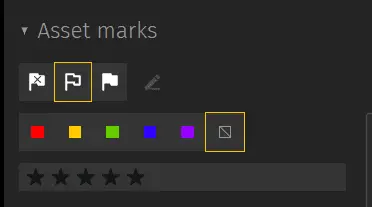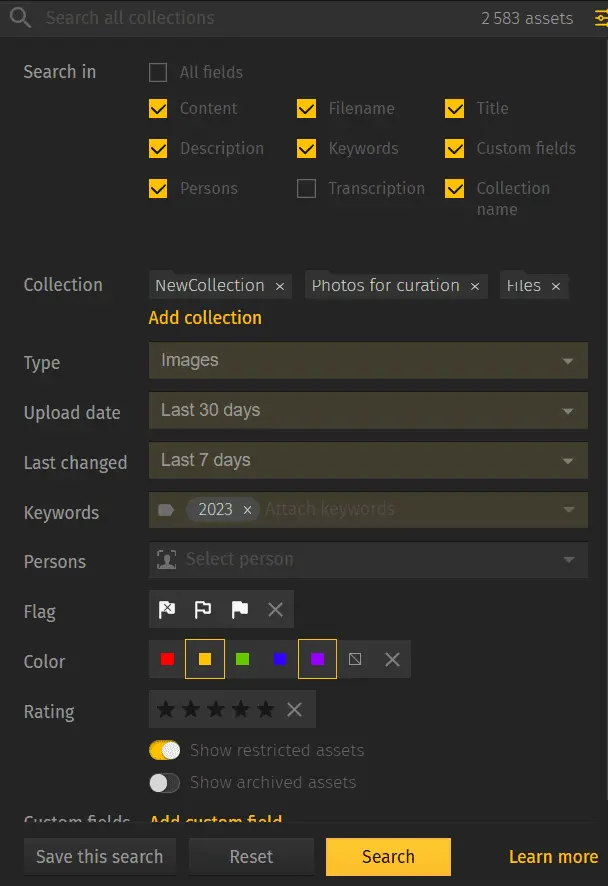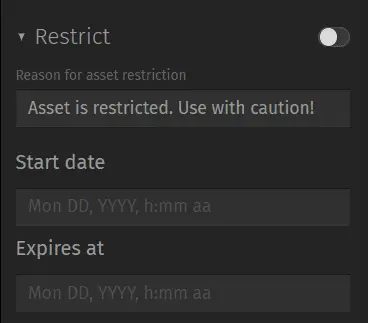In this article, you’ll learn:
Local governments are responsible for the effective management of the daily life of local communities and take care of such things as licensing, schools, waste collection, public transportation, etc. No wonder that any local council deals with lots and lots of digital files daily. These are documents (like building permits, all kinds of licenses, records, and so on) as well as marketing collateral such as photos and videos of events, concerts, the city itself, etc.
One of the solutions to effectively manage and quickly find the necessary files, no matter if these are images or documents, is a digital asset management platform. In this article, we will discuss how DAM software can help local governments improve their file organization and workflows.
How Local Governments Can Use Digital Asset Management Software
Let’s see what DAM features can simplify and make the daily operations of local councils faster.
Centralized Storage
DAM platform is a convenient storage solution that supports multiple file formats, including design files, data files, videos, and audio files. With a well-thought folder structure, it can help all local government departments store their materials in one place instead of each member of the communication or marketing team saving digital assets on their computer, for example.
Advanced File Management and Search Options
Local councils need to respond to all community needs as soon as possible. What’s more, there are cases when urgent actions are needed, such as urgent legal deadlines, unexpected payment decisions for street resurfacing, or a natural disaster response for instance, etc.
The ability to find the necessary information, documents, or even photos plays a crucial role in resolving such urgent matters. This is where a DAM system saves time and effort with its advanced metadata and search capabilities.
In DAM, one can mark all digital assets with keywords and even create limited keyword lists. In such a way, the teammates will only be able to use the keywords from the given list.
If you don’t want to tag all the assets manually - you can use the AI smart keyword tagging feature for photos, for example. It will make the whole tagging process faster. Along with keywords, you can also add colors and flags or star files as shown in the picture below.

All these details can be later used when searching for the necessary files in a DAM. The more fields you fill in - the more detailed the search will be. Additionally, it’s possible to choose up to 10 folders (or collections) and search only in them.

One can also restrict files and fill in their expiration dates. This is especially useful for different documents that local governments can be using, like licenses. For instance, once team members see that the file is expired, they know they shouldn’t use it. For restriction, one can add a comment and let other users know what should or shouldn’t be done with this digital asset.

Important community members are often featured in local government communications. To find their photos, somebody will need to go through multiple images, which takes so much time. However, this process takes only a few seconds with the AI face recognition feature in DAM. Already after the first search, you will see all the photos with a particular person and can use them right away.
If needed, one can also link a photo with a consent form and share these files with the necessary person. We’re explaining how to do this in the following part of our article.
Sharing and receiving files
DAM software makes sharing and receiving all kinds of digital assets faster and more intuitive. Local government organizations need to exchange multiple files with different people daily - like agreements with contractors, lease agreements, photos from events, etc. And it’s quite difficult to keep track of all the emails and messages with files.
In DAM, you can quickly find the necessary digital files and create a shareable link protected with a password - we call them websites.
Let’s say some local council needs to share documents or photos with another organization. They can easily do it via a website and, what’s more, add a consent form or give permission to download files sent. All this can be done in the website's settings once it’s created.
The website looks like a small version of a DAM system, where third parties can revise assets, add comments, etc. - it all depends on the settings chosen. And, the notifications about all these actions will be sent to the email if needed.
Check the video below to see how to create and manage websites in Pics.io DAM.
Receiving files from non-DAM users works the same - just create an inbox that will serve as a folder and will allow them to upload all the necessary files and share them securely.
In the video below, we are showing how to work with inboxes in Pics.io DAM.
User Permissions
Different access levels come in handy when different departments are using the same digital assets for different purposes. Many local councils have marketing or communications teams that only need access to photos and videos from, let’s say, events or official meetings. Thus, these users can only download files and not change or comment on them within a DAM system.
Version control
As local governments update community guidelines and other materials spread in the community, they need to keep track of all the changes. This is where the version control DAM feature becomes a necessity. It not only saves all file revisions under one thumbnail with the history of changes, but also improves collaboration as team members can leave comments and tag each other right under each file version.

Versioning also helps to maintain brand consistency as one can easily find the approved file version or go back to other versions if needed.
How to Choose a Digital Asset Management Software for Local Government
Choosing a DAM system is not an easy task. We’ve prepared some tips on how to select a digital asset management software for a local government that will help optimize processes and manage all the digital files efficiently. Read on!
Build a team and research workflows
First of all, it’s important to know who and how will be using a DAM system.
The next questions will help to understand what exactly a solution a local council needs.
- Do you need to move files to a DAM’s storage or do you want to continue using your storage (like Google Drive or Amazon S3 )?
- How many people and how often will be using the software?
- What teams or departments are the most frequent users?
- Are user permissions needed?
- What file formats are required?
- What DAM functions are the most important?
Find the right solution
Based on research in the previous step, local governments can start looking for software that will meet all their needs. The right DAM needs to match the local government’s workflows and make collaboration between different departments easier.
Pricing
Most DAM providers have different pricing plans depending on features available, number of users included, etc. Thus, the monthly price will vary depending on what functionality a particular local government needs.
For example, any additional user or AI features can go for additional price. However, if a local council only needs basic DAM functionality, a DAM system should not be all that expensive.
Moreover, digital asset management is cost-efficient as it saves lots of time for its users, which means that they now can spend more time working on other tasks rather than looking for the necessary files in Google Drive, for instance.
Meet with vendor
The best way to learn about a particular DAM solution is to have a demo call with the provider. During such a meeting, one can see how a DAM system works and get answers to all their questions.
The representatives of local government will also benefit from having a trial period if possible. Potential users will be able to test all the necessary features and see if this software matches their workflows.
Security
To protect all the sensitive and confidential data they’re operating with, local councils need to use a highly secure digital asset management platform. Consider such things as SSO login and GDPR compliance - they ensure an additional security level to all the digital assets stored in DAM. In such a way, all the data will be stored, managed, and shared in a protected environment.
Local governments may consider using a DAM solution that works on top of their current storage like Google Drive or Amazon S3.
With Pics.io for example, there’s no need to move all the files somewhere or buy additional storage - it just works on top of Google Drive or Amazon S3.
Final Thoughts
Local governments shoulder immense responsibilities, from day-to-day administrative tasks to crucial decision-making. In today's digital era, effective digital asset management and seamless accessibility can play a game-changing role in ensuring efficiency and responsiveness.
Pics.io DAM stands out as a robust solution tailored to meet these needs, addressing challenges like quick search, convenient storage, top-notch security, and others. By integrating such a platform, local councils can not only enhance their operational efficiency but also foster better collaboration among departments and with the public.
Did you enjoy this article? Give Pics.io a try — or book a demo with us, and we'll be happy to answer any of your questions.




